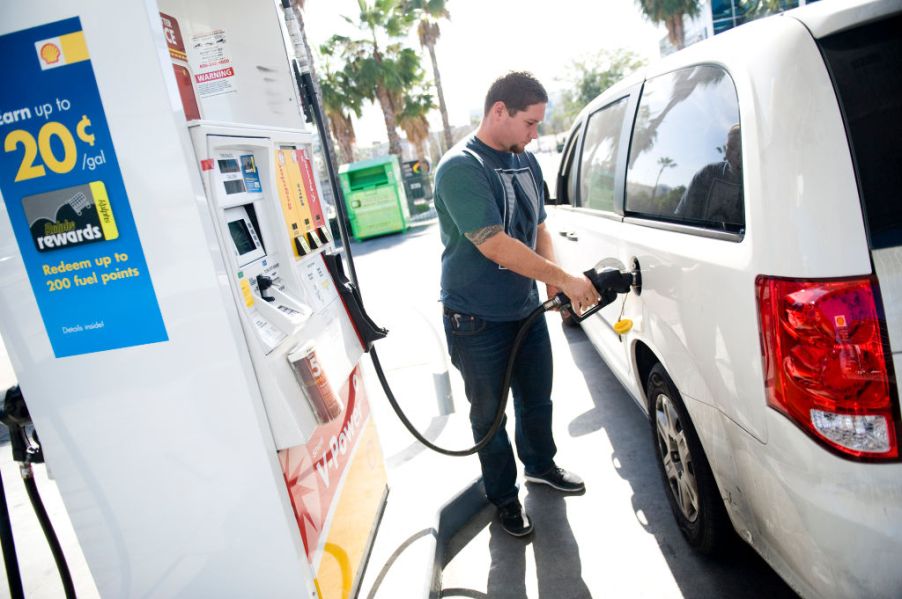
This Is Why Gas Is Called ‘Unleaded’
Most people don’t consider where gasoline comes from or how it’s made. Their main concern is the price of gas or if they’re ready to switch to electric. The history of fuel and why we use unleaded gasoline is pretty fascinating. The first cars ever invented weren’t even gas-powered, much less unleaded. Kelley Blue Book details what unleaded gas is and why it makes a difference when you hit the pumps.
Steam cars
To understand unleaded gas, you have to consider the history behind it. According to History.com, the first automobiles didn’t run on gasoline. Like locomotives, they were powered by steam engines. The first steam-engine car was invented by a French military engineer named Nicolas-Joseph Cugnot in 1769.
The steam engine allowed the car to move forward, but it was slow, uncomfortable, and needed improvement. People began to wonder if a car could go faster. Thus began a race to create a new, improved engine that could top the speeds of a steam car.
First gasoline-powered cars
While a debate surrounds who first invented the first gas-powered engine, most agree it was Carl Benz, who created a one-cylinder two-stroke unit. The first time it ran was on New Year’s Eve 1879. The Benz Patent Motorwagen looked more like a motorized tricycle, but it gave birth to the modern gasoline engine.
Lead gas
It’s common knowledge that lead products can hurt the human body. Like some paint products, lead was added to gasoline starting in the early 1920s. According to the Nation, a young engineer working for the General Motors Research Corporation discovered that tetraethyl lead “worked to reduce ‘knock’ or ‘pinging’ in internal-combustion engines.”
Knocking was the sound of metal rubbing against metal, considered a serious problem with cars at the time. After all, no one likes strange noises coming from a car. By eliminating the knocking, cars would run more efficiently. Lead solved the rather annoying problem. It wasn’t until later that studies showed its toxic effects. Children were some of the biggest victims of lead poisoning.
The Nation stated, “As many as 5,000 Americans died annually from lead-related heart disease prior to the country’s lead phaseout … One can estimate that the blood-lead levels of up to 2 million children were reduced every year to below toxic levels between 1970 and 1987 as leaded gasoline use was reduced.” In 1986, lead gasoline was outlawed in America, but it’s still used in other countries.
Unleaded gas
Unleaded gas simply means that no lead has been added to the mixture. Kelley Blue Book points out that if you buy a lead-based car, you’ll have to make sure it passes an emissions test. Most cars on the road now have unleaded engines, however. So unless you have a classic car produced before 1986, you shouldn’t have any problems filling up your vehicle.


